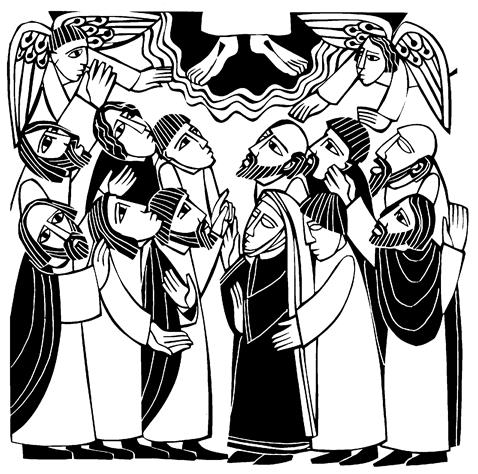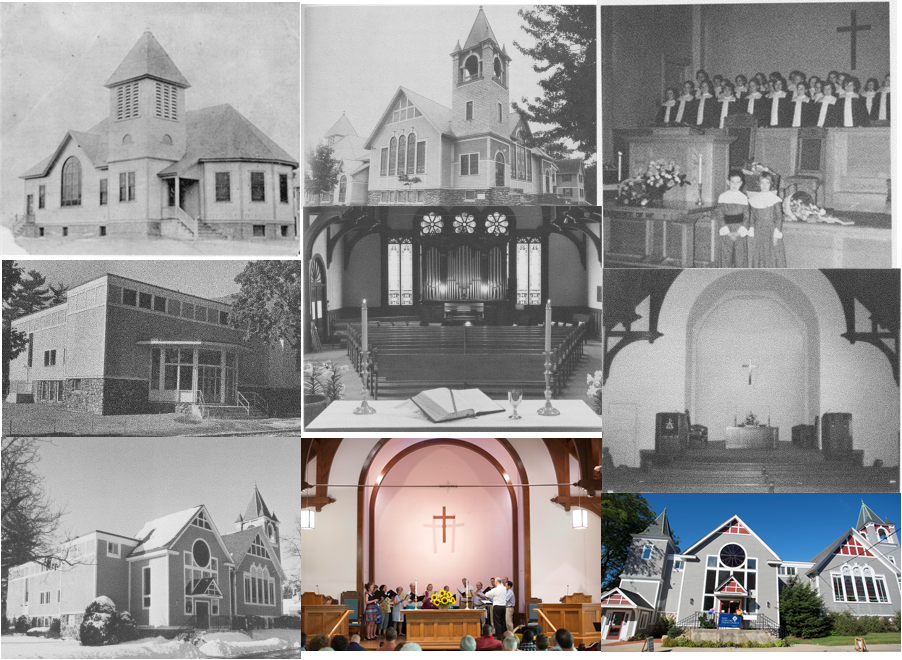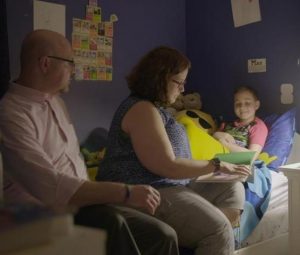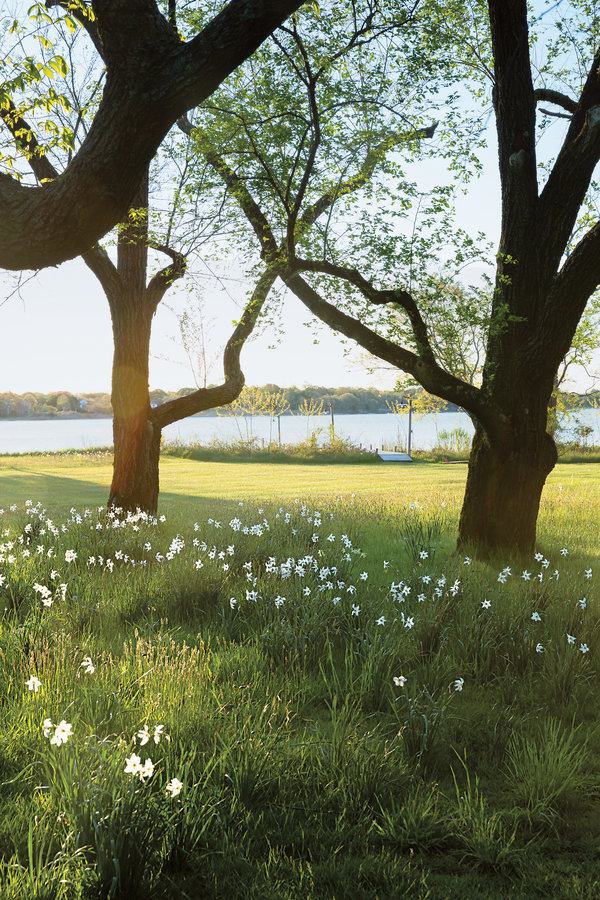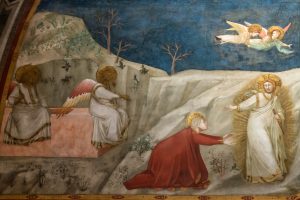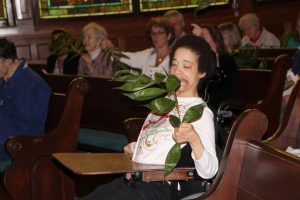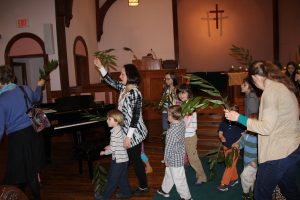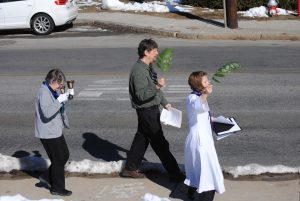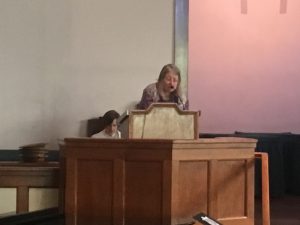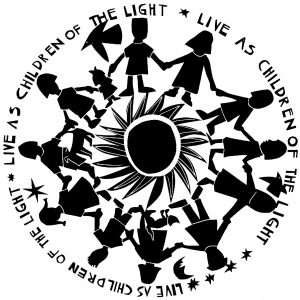Luke 24:44-53
The disciples of Jesus have been on a roller coaster. They experienced the excitement of following him; the devastation of his suffering and death; the fear and hope of his resurrection. Now, forty days later, Jesus tells them that there is at least one more twist in the plot.
Jesus says, “I am sending upon you what my Father promised; so stay here in the city until you have been clothed from power from on high.” Then Jesus leads the disciples out to Bethany, and lifts his hands to bless them. While he is blessing them, he withdraws from them, and is carried up into heaven.
If I were there, I would have plenty of questions about these events. What kind of power is Jesus talking about, that will come from on high to clothe the disciples? Where exactly is Jesus going, as he rises up into the sky, and how is it happening? Why is Jesus leaving again so soon, and will we ever see him again?
I would have lots of questions, but according to our scripture, the disciples are unfazed by what they hear and see. They receive Jesus’ words and his rising as a gift. They return to Jerusalem with great joy. They spend lots of time in the temple blessing God and waiting for whatever will happen next. Stay tuned until next week for the feast of Pentecost.
This gospel text is one of two texts we have that describe Jesus’ ascension. The other one, somewhat different, is in the book of Acts. The ascension of Jesus is right here in our scriptures, described twice and alluded to many other times. But we rarely talk about it in the Protestant branches of the Christian church, unless we are reciting a creed: “He ascended into heaven, and is seated at the right hand of the Father.”
The story of the ascension assumes several things that we may have trouble believing here and now. To start with, there’s the idea that Jesus’ physical resurrected body literally ascends, levitates off the earth and rises up into the sky. There are some great pieces of art that try to capture this. In some, like on the bulletin cover, only Jesus’ wounded feet are visible as he rises up above his followers. In other images, it seems like Jesus is leaping up into heaven, or reaching out towards God’s heavenly hand, ready to help him up.
This all may seem very strange to us, but it does have some biblical context. In the book of Genesis, Enoch, the father of Methusalah, walked with God for three hundred years of his long lifespan. Then, he was no more, for God took him (Genesis 5:21-23). In the second book of Kings, we learn that the great prophet Elijah also had an unusual end. He was taken up into heaven by God in a whirlwind (2 Kings 2:11). Other stories of an ascent directly from earth into heaven were common in the time of Jesus, from Greek and Roman and Jewish traditions. So, Jesus’ followers would have known that such a thing could happen, and that it happened to people who are particularly holy.
Another piece of this ascension story that may be hard for us to wrap our minds around is the concept of the universe that existed at the time. In the time of Jesus, the universe was understood to contain three realms. First, there is earth, where we are now. Below the earth is the place of the dead known variously as the underworld, or sheol, or hell. Above the earth, in the midst of the sky is an invisible dividing line called the “firmament.” Beyond the firmament is the third realm, the realm of God, or heaven. In this understanding, going into God’s presence means literally going up.
What do we do with a story like the ascension today, with such a different cultural context, and scientific understanding? How can the story of Jesus’ ascension help in our understanding of Jesus or our understanding of human life and death?
According to Christian tradition, Jesus exists from the very beginning of time up until the very end of time. He is our Alpha and Omega, our A to Z, our beginning and our end. The story of Jesus that we celebrate each year between Advent and Easter marks a tiny portion of Jesus’ eternal presence. Sometimes it’s drawn like a graph, where Jesus is going along and along and along and then briefly is incarnated, lives, dies, is resurrected, and then makes a return trip back to where he started.
The ascension story is Jesus’ return home. In European artistic tradition, this part of the story usually appears like a royal court scene, complete with thrones: God in the center, Jesus on God’s right hand. I like to imagine, though, a more affectionate reunion between Jesus and the one he called his Abba, his daddy. Perhaps there was an embrace, or a celebration. And those of us who prefer a less human idea of God might have a completely different, more abstract vision of what it would be like for Jesus to be fully reunited with God after his time on earth.
This timeline idea of Jesus carries powerful messages. God has always existed; Jesus has always existed. And yet, for Christians, because Jesus came down, and went back up, our relationship with God is changed forever. Our ancestors got to know and learn from Jesus, and pass their knowledge on to us. God came to know about human experience and human suffering from the inside. God came close to us, as close as it gets. And, that closeness didn’t end when Jesus ascended. Jesus continues, and we are now his body: the church. The spirit comes down to breathe in us and clothe us with power.
As extraordinary as the story of Jesus is, his story also gives us a powerful way of thinking about human birth, and life, and death. What if we are not so different from Jesus? We are made in God’s image. At the heart of each person, is a piece of God, that has become incarnate – embodied –for a brief span of time. Then, after death, our spirit returns home to God – a prodigal daughter or son – welcomed with great joy.
This past week, one of our own, Bill Andrews, passed into God’s arms. Many of us are mourning him. Many of us are mourning others. This weekend, we remember those who died in service to our country, as part of our armed forces. And each of us have our own mortality to contend with, as well.
In both life and death, Jesus is our vanguard. He goes before us, to show us the way. Jesus is a path, showing us how to live well in a body, and find God on earth. Jesus is a path, showing us how to return into God’s complete embrace, after our time on earth has to end.
Jesus, thank you for accompanying us: beyond all time and also in our human lifetimes. May our knowledge of your eternal care ease the pain of grief we feel for others, and may it give us courage to follow in your footsteps, until we follow you finally into the arms of God’s mercy, into the blessed rest of everlasting peace, and into the company of the saints in light. Amen.
